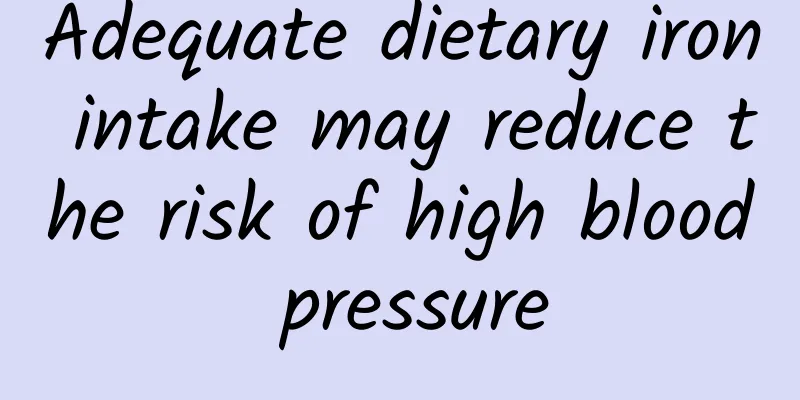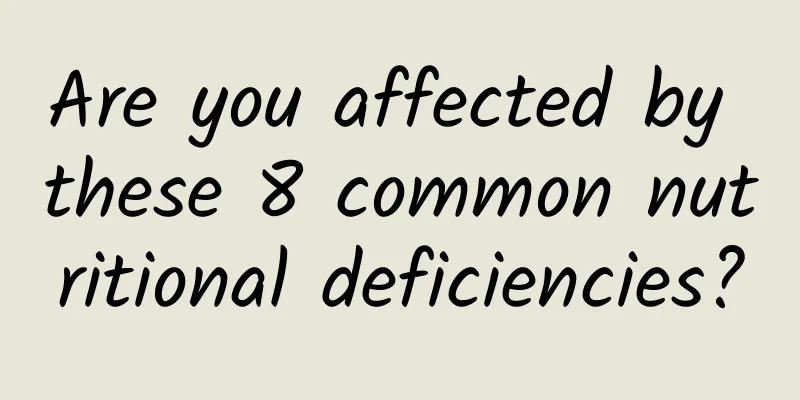Adequate dietary iron intake may reduce the risk of high blood pressure

|
Hypertension is called the "silent killer" because it rarely shows very obvious symptoms. More than half of strokes and heart attacks are caused by high blood pressure, and high blood pressure also increases the risk of chronic diseases such as kidney disease and dementia. In low-income and middle-income countries, the prevalence of hypertension is still rising rapidly. In China, there are currently about 245 million adults with hypertension. Actively looking for modifiable risk factors for hypertension is of great significance to preventing and controlling the occurrence and development of hypertension and reducing the harm of hypertension complications. Among them, a reasonable diet and a healthy lifestyle are important strategies for preventing and managing hypertension. (Pictures from the Internet, copyright belongs to the original author) Iron is one of the essential trace elements for the human body and is involved in the formation of hemoglobin, oxygen transport, DNA synthesis, mitochondrial electron transfer and muscle function. Dietary iron exists in food in the form of heme iron and non-heme iron. A recent study published in the biomedical journal J Nutr Health Aging found that the relationship between dietary iron and the risk of new-onset hypertension is nonlinear. There is a U-shaped relationship between total iron and non-heme iron intake and the risk of new-onset hypertension, while there is an L-shaped relationship between heme iron intake and the risk of hypertension. Dr. Zhang Zhuxian is the first author and Professor Qin Xianhui is the corresponding author. The study was a prospective cohort study based on data from the China Health and Nutrition Survey, which included 12,245 Chinese adults without baseline hypertension. Dietary iron intake data were collected through 24-hour dietary recall and household food inventory for 3 consecutive days, and the cumulative mean of iron intake represented its long-term exposure level. New-onset hypertension was defined as hypertension diagnosed by a physician during follow-up, use of antihypertensive drugs, systolic blood pressure ≥140 mmHg and/or diastolic blood pressure ≥90 mmHg. After 6.1 years of follow-up, 4,304 participants developed hypertension. The study found that there was a U-shaped relationship between total dietary iron intake and the risk of new-onset hypertension (Figure 1A), and the risk of hypertension was lowest when total dietary iron intake was between 18.2-22.1 mg/d. Similarly, there was a U-shaped relationship between dietary non-heme iron intake and the risk of new-onset hypertension (Figure 1C), and the risk of hypertension was lowest when dietary non-heme iron was between 17.4-1.3 mg/d. However, there was an L-shaped relationship between dietary heme iron intake and the risk of new-onset hypertension (Figure 1B), and the risk of hypertension was significantly reduced by 25% in those with a dietary heme iron intake of more than 0.25 mg/d compared with participants with a dietary heme iron intake of less than 0.25 mg/d. An unreasonable diet is the main cause of disease and death in the Chinese population, and it is also an adjustable risk factor that is easy to correct and improve. The results of this study emphasize the importance of maintaining an appropriate amount of iron intake through a reasonable diet for the primary prevention of hypertension in the Chinese population. References: Zhang Z, Liu C, Liu M, Zhou C, Li Q, He P, Zhang Y, Li H, Qin X. Dietary Iron Intake and New-Onset Hypertension: A Nationwide Cohort Study from China. J Nutr Health Aging . 2022;26(11):1016-1024. Editor | Zhang Zhuxian and Wu Yiting Audit | Qin Xianhui Reprint: Please contact us and indicate the source. |
>>: The trial of a bottle of "human albumin"
Recommend
What are the symptoms of endometrial bleeding?
Do you know the symptoms after endometrial bleedi...
How to treat lower back pain caused by adnexitis
Gynecological diseases are common diseases among ...
How to reduce the big belly after childbirth?
I believe that many women will find that even aft...
How to make up after a pregnant woman gets angry
Pregnant women have a very difficult time through...
What to do if progesterone is low
Pregnant female friends, you should all know abou...
Can girls lose weight by doing push-ups?
Push-ups are a popular fitness exercise nowadays....
What does positive leucorrhea clue cells mean?
Discharge is a substance that all normal pregnant...
Tick Yes: Survey shows 3% of Australians check Facebook during sex
According to a survey conducted by Tick Yes, an A...
Can I have sex with a low-risk HPV81?
HPV is an infectious disease, and its main transm...
Can I take detoxifying and beauty capsules after having an abortion?
Nowadays, as people pay more attention to their a...
Can't sleep because of nasal congestion? Please remember these four methods to clear your nose!
In the hot summer, the air conditioner is turned ...
Causes and solutions for dry lips during pregnancy
Many women experience physical changes during pre...
How many days is the safe period of menstruation?
Our women today have many advantages, such as bei...
What causes back pain during menstruation?
During menstruation, many people will experience ...
How to do aerobic exercise after childbirth?
After giving birth, many women's figures beco...









